Learn how to fix the problem of “CHKDSK an unspecified error occurred” within two steps in MiniTool. First, back up or restore disk files. Then, fix the issue by running SFC and DISM, scanning for viruses, performing a System Restore, or formatting the disk.
CHKDSK an Unspecified Error Occurred Windows 10
CHKDSK is a built-in disk checking tool on Windows. It is used to scan and repair file system errors, bad sectors, and other problems. If you get the “An unspecified error occurred” prompt when running CHKDSK, it usually means:
- The system detected an anomaly that cannot be categorized as a specific error type.
- The problem may be caused by issues with the disk file system, system files, virus infections, improper system changes, or software conflicts.
- Sometimes, a cryptic hexadecimal error code may appear. Examples include: 6e74667363686b2e 1713, 766f6c756d652e63 461, 696e647863686b2e 532.
When the unspecified error occurs, do not ignore it, but take timely measures to save your disk.
Back up or Recover Data Before You Fix the Error
As mentioned above, the unspecified error may indicate serious disk problems, which can lead to data loss at any time. In addition, the repair process itself can also put your files at risk.
So, to protect your data, it is essential to back up or recover your files before attempting any fixes.
Case 1: When the Disk Can Be Accessed
Now, try to open your disk. If you can access the data inside, then you only need to perform a backup. I recommend using this robust disk backup tool, MiniTool ShadowMaker.
It supports backing up the entire hard drive or a specific partition. You can also selectively back up important documents, photos, etc. Let’s start.
Step 1: Download and launch MiniTool ShadowMaker
Click the following button to download and install MiniTool ShadowMaker.
MiniTool ShadowMaker TrialClick to Download100%Clean & Safe
Once done, open the software, and then click Keep Trial to enter the main interface.
Step 2: Select a backup source
Switch to the Backup tab on the left. Click the SOURCE section to find the data you want to back up, selecting between the following options: Disk and Partitions, Folders and Files. Then, tick them and hit OK.
Step 3: Select the backup destination
Click the DESTINATION section and specify a location to store backups. Then, hit OK.
Step 4: Start the backup process
After all settings are done, click Back Up Now. The software will start creating the image file. Wait patiently for it to complete.

Once done, go to the destination folder to check your backup files.
Case 2: When the Disk Is Not Accessible
If the disk cannot be accessed, then you need to use professional data recovery software to recover files from this disk.
When the disk gets corrupted, such as becoming RAW, losing partition, or prompting “need to format”, traditional methods cannot access the file system. However, this powerful tool, MiniTool Power Data Recovery, can do it.
It supports recovering data from a variety of storage devices, including internal hard drives (HDD/SSD), external hard drives, USB flash drives, SD cards, camera memory cards, etc. And almost all file types can be recovered.
This free file recovery software allows you to restore 1 GB of files for free. Download and install it now.
MiniTool Power Data Recovery FreeClick to Download100%Clean & Safe
Step 1: Select the disk and scan for the data inside
Launch MiniTool Power Data Recovery. Under the Logical Drives tab, find the target drive and click Scan.
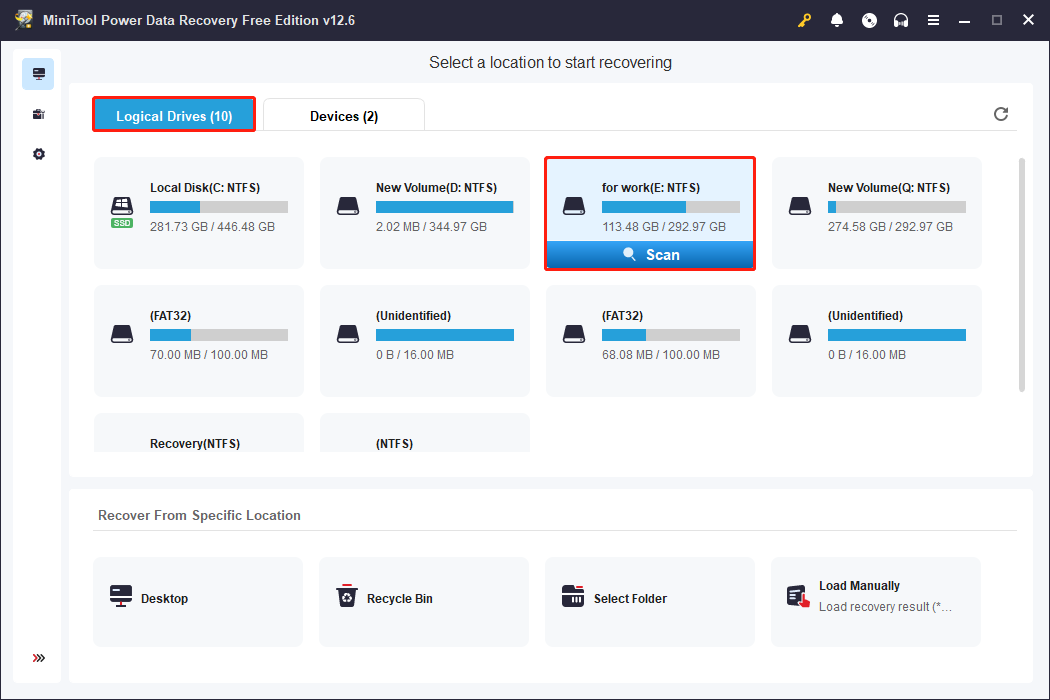
Step 2: Find the target files using Path, Type, Filter, and Search
When the scan process completes, all files will be listed under Path based on the file structure. You can expand the matching folder to locate files. Besides this, there are some useful features to help you find files quickly.
- Type: Displays scan results by file type, allowing you to quickly locate documents, pictures, videos, and others.
- Filter: Filter results by file type, modification date, file size, and file category to narrow your search and improve search efficiency.
- Search: Enter file name keywords to search for specific files, ideal for targeted recovery needs.

Step 3: Preview files before recovery
The Preview feature allows you to preview files before recovery, confirming their integrity and the intended data. This not only improves recovery accuracy but also prevents the accidental recovery of invalid files.
Just double-click the files one by one. The file content will show on the screen.

Step 4: Save files to a new and safe path
Tick the needed files and click Save. In the destination window, choose a location for the recovered files. Finally, click OK. The recovery process will start.
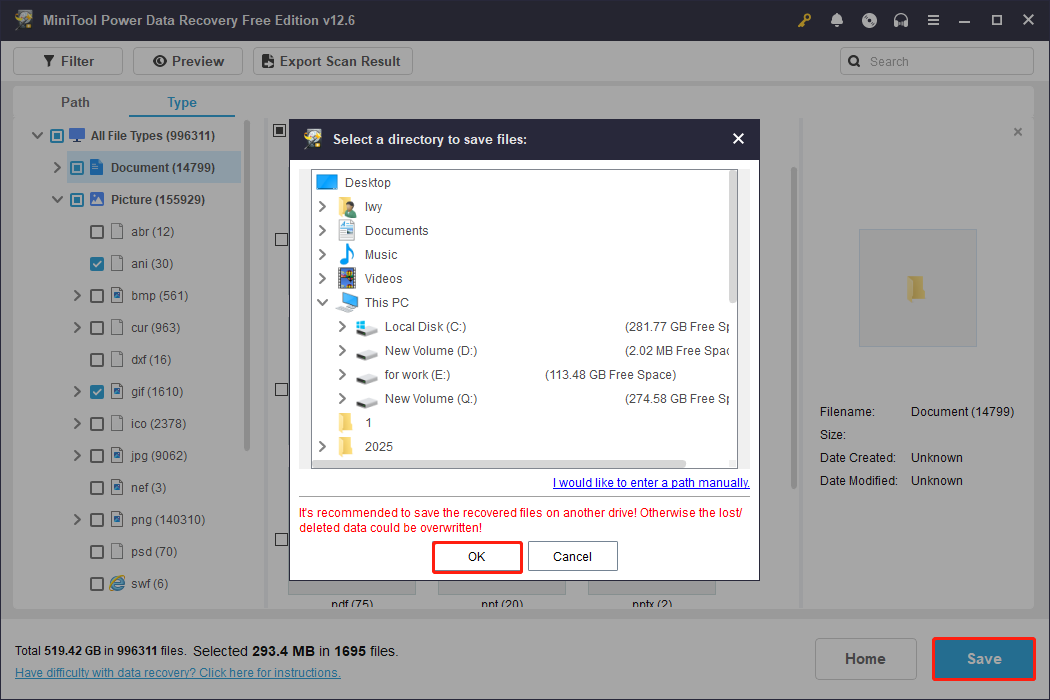
When it completes, you will see a prompt writing the free remaining recovery capacity. When it is used u, upgrade to an advanced edition.
How to Fix CHKDSK an Unspecified Error Occurred
After the files are safe, it’s time to fix “CHKDSK an unspecified error occurred”.
Fix 1: Run CHKDSK in Safe Mode
Starting CHKDSK in safe mode is worth a try. When starting Windows in safe mode, only the most basic drivers and services are loaded. At this time, CHKDSK is easier to obtain exclusive access to the disk, so as to successfully perform repair tasks.
Step 1: Search for System Configuration in the Windows search bar and press Enter.
Step 2: Switch to the Boot tab, tick Safe boot under Boot options, and click OK. Then restart your PC.

Step 3: After restarting, open Command Prompt as an administrator.
Step 4: Type chkdsk E: /f and press Enter. Replace E with your disk drive letter.
Wait for the scan and fix to complete, and then exit safe mode.
Fix 2: Execute SFC and DISM
Corrupted system files or images may cause “An unspecified error occurred”. Running SFC and DISM can fix it. DISM can repair the system image itself. SFC can scan and repair system files. And it will try to extract clean files from the system image to replace the damaged parts.
Step 1: Type Command Prompt in the Windows search, right-click it, and choose Run as administrator.
Step 2: Input the following command and press Enter to scan and repair the system image:
DISM /Online /Cleanup-Image /RestoreHealth
Wait for the execution to complete. It may be stuck at 20% for a while, which is normal.
Step 3: After it ends, continue entering sfc /scannow and press Enter.

Keep the window open until the scan is complete. The results will be displayed after that.
Fix 3: Perform a Malware Scan
Viruses or malicious programs may prevent CHKDSK from functioning properly. In this case, perform a virus scan to detect and clear potential threats.
Step 1: Press Win + I to open Settings.
Step 2: Click Update & Security > Windows Security.
Step 3: Choose Virus & threat protection under Protection areas.
Step 4: Hit Scan options, select a scan method, and click Scan now.
After the scan is complete, the system will prompt whether any threats are found and provide options for quarantine or deletion.
Fix 4: Make Use of System Restore
When “An unspecified error occurred” appears, using System Restore can restore the system to a previous normal state, thereby bypassing current unidentified issues. It is especially suitable for scenarios where specific causes of errors cannot be located.
Step 1: Type Create a restore point in the Windows search bar and press Enter.
Step 2: Click System Restore, and then click Next.
Step 3: Choose a restore point and click Next > Finish.
Fix 5: Format Your Hard Drive
If all the above methods fail, it is recommended to format your disk. This can solve many problems, but it will clear all data. Since you have backed up or restored the data, you can format the disk directly.
Here are two options for you:
Option 1: Use Disk Management
Disk Management is a Windows built-in tool. You can use it to format the drive.
Step 1: Open Disk Management, right-click your disk partition, and choose Format.
Step 2: Type a new volume label, choose a file system, and click OK twice.

Option 2: Try MiniTool Partition Wizard
MiniTool Partition Wizard is a powerful disk management tool. It provides an intuitive interface and efficient operation process, making formatting a disk simple and reliable.
If formatting fails in Disk Management, you can turn to this disk formatter. It not only helps complete the task but also provides more file system options.
Step 1: Download and install MiniTool Partition Wizard, then launch it.
MiniTool Partition Wizard FreeClick to Download100%Clean & Safe
Step 2: Select the target drive and click Format Partition under Partition Management.
Step 3: Set a new partition label for your drive, choose a file system based on your needs, and click OK.
Step 4: In the lower left corner, click Apply to make the change take effect.
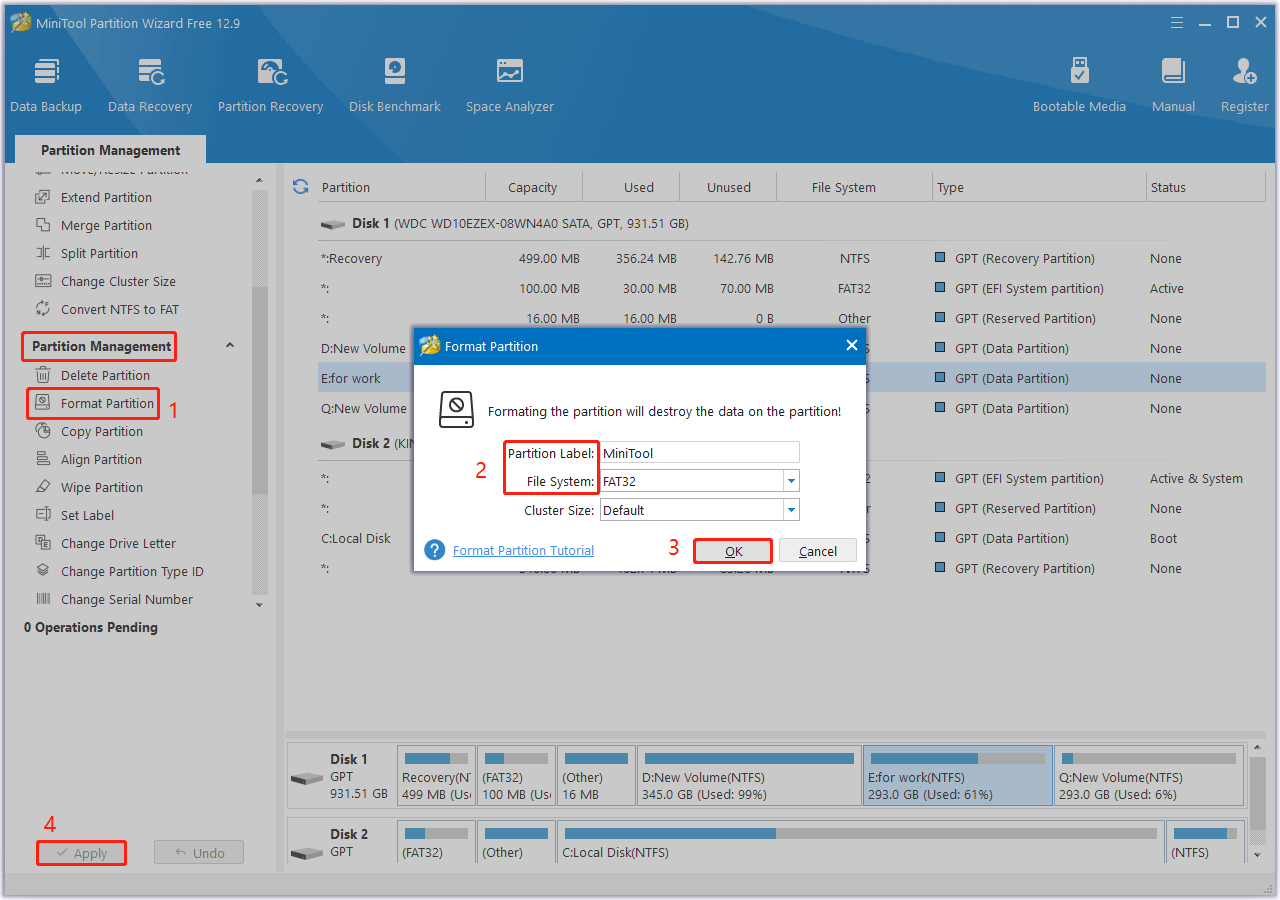
Final Words
When you encounter “CHKDSK unspecified error occurred”, ensure disk data security first. Back up files using MiniTool ShadowMaker or restore files using MiniTool Power Data Recovery according to the disk situation.
After that, try running SFC and DISM, performing a malware scan, doing a System Restore, or disk formatting to fix this error. Hope your disk can be back to normal condition.
Have questions about MiniTool products? Welcome to contact us by [email protected].
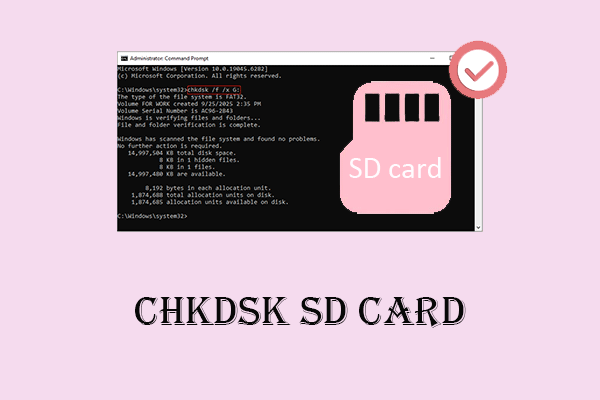
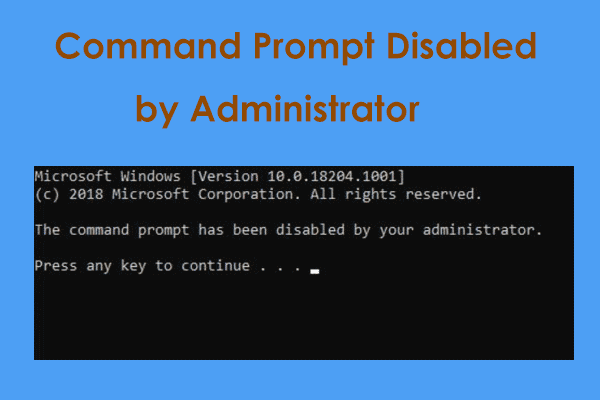


User Comments :